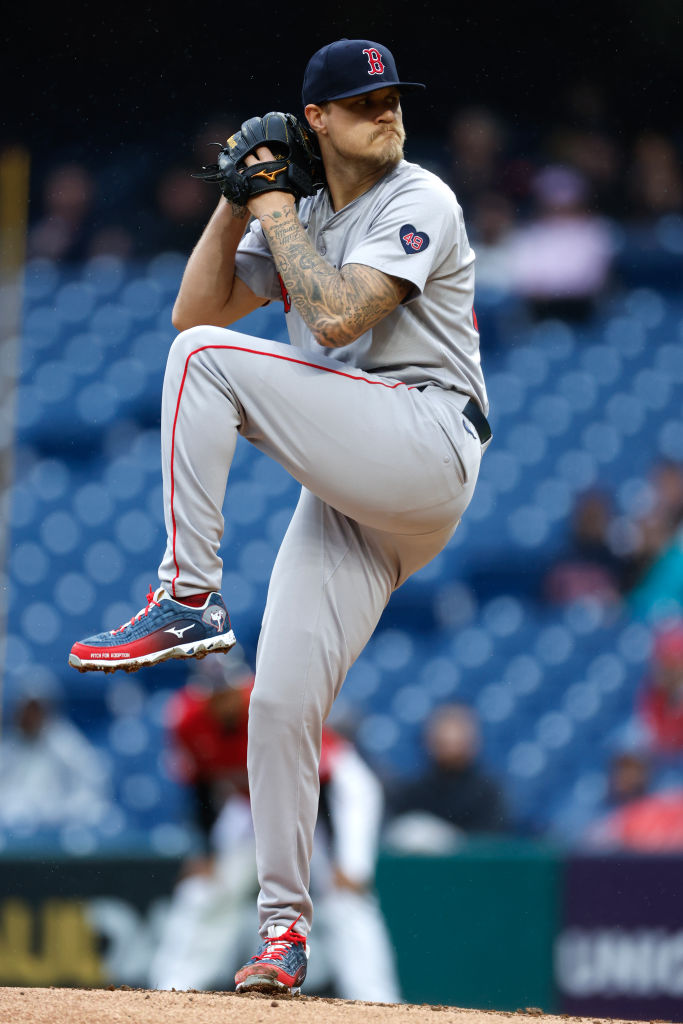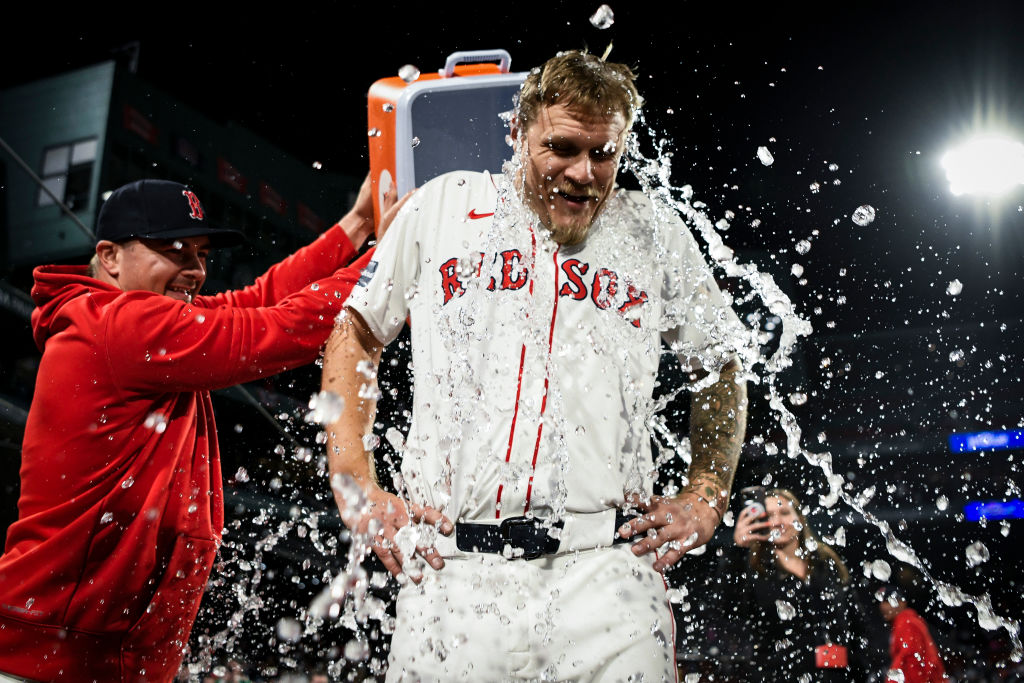Simple question: is Tanner Houck becoming the ace the Red Sox so desperately need?
Back when this season began, of course, the biggest question about the Red Sox was the starting pitching. More specifically, if you listened to The Baseball Hour, the question concerned the group of Brayan Bello, Garrett Whitlock, Kutter Crawford and Houck, a collection of young arms upon the Red Sox have seemingly been relying for years.
Simply put, the Red Sox needed someone (or multiple someones) to emerge from a relative mass of mediocrity and become No. 1 and/or No. 2 starters.
As such, we may have our answer: Tanner Houck might be the next Red Sox ace.
Though he did not record the win, Houck went another 6.2 sterling innings last night in the Red Sox’ 5-4 win over the Chicago Cubs at Fenway Park. In the process, Houck allowed just four hits and one run while striking out nine, continuing an early-season run that has resembled something from a “How To” video.
“He has been very consistent,” manager Alex Cora told reporters. “Not walking people, swings and misses and controlling the running game whenever there’s somebody there. He has been awesome.”
While Houck’s teammates, too, are already raving, a closer (and more objective) inspection suggests that Houck’s performance over the first month of the 2024 season is sustainable. And that starts with the eyeball test.
For starters, Houck’s delivery looks simpler, more consistent, more dependable. (See first image below.) Always blessed with great movement on his pitches – specifically his two-seam fastball and slider – Houck is now throwing them all for strikes, including a split-finger/changeup that has what ESPN announcer David Cone called a “hybrid” grip. (I wondered about this on a recent episode of The Baseball Hour as people keep calling it a splitter but Houck holds more like a circle change.) Prior to this season, Houck had 41 career starts and only thrown as many as 62 strikes in an outing on three occasions. He has now done that an additional five times in six starts this year, including a whopping 72 strikes in 95 offerings last night.
As for how Houck rates against the field in the entire major leagues:
He ranks first in WAR.
He ranks fifth in innings.
He ranks fifth in ERA.
He ranks eighth in ground ball percentage.
He ranks fourth in walks per nine innings.
He ranks seventh in strikeouts.
He ranks fifth in strikeout-to-walk ratio.
He ranks third in fewest home runs allowed.
Now, the obvious question: why did this all take so long for the 27-year-old right-hander, who was a first-round selection by the team in 2017 during the reign of manager Dave Dombrowski?
Truth be told, the Red Sox have mishandled Houck’s development. Though he has always had difficulty harnessing his stuff and developing a third pitch (that split-change), the Red Sox have also bounced between their desire to change Houck from a two-seam fastballer (or power sinkerballer) into a four-seam strikeout pitcher. The back-and-forth has unquestionably hindered his development and, as a result, probably delayed his ability to command his stuff. The truth is that Houck could have (and should have?) been something closer to his current version about two or three years ago, but the Red Sox’ uncertainty (coupled with their administration changes?) undoubtedly turned his development into an obstacle course.
And while we’re at it, let’s not rule out the role of analytics, the game’s overall desire for more strikeouts (and four-seamers up in the strike zone) and sheer stupidity for people trying to make Houck something he isn’t or wasn’t.
The moral of the story: the Sox should have been trying to make Houck a better version of what he already was instead of trying to turn him into something they wanted him to be.
At the end of the day, Houck is now pitching better than ever, something for which the Sox should be grateful given the absence of pitching in their system. If Bello, Crawford and/or Whitlock can make even remotely similar jumps by year’s end, the Sox could have a foundation in place that makes them a legitimate contender for the playoffs and, perhaps, more by 2025 or 2026.
And, yes, Houck should also be considered as a candidate for a longer-term contract.
Currently, he is not eligible for free agency until after the 2028 season.









